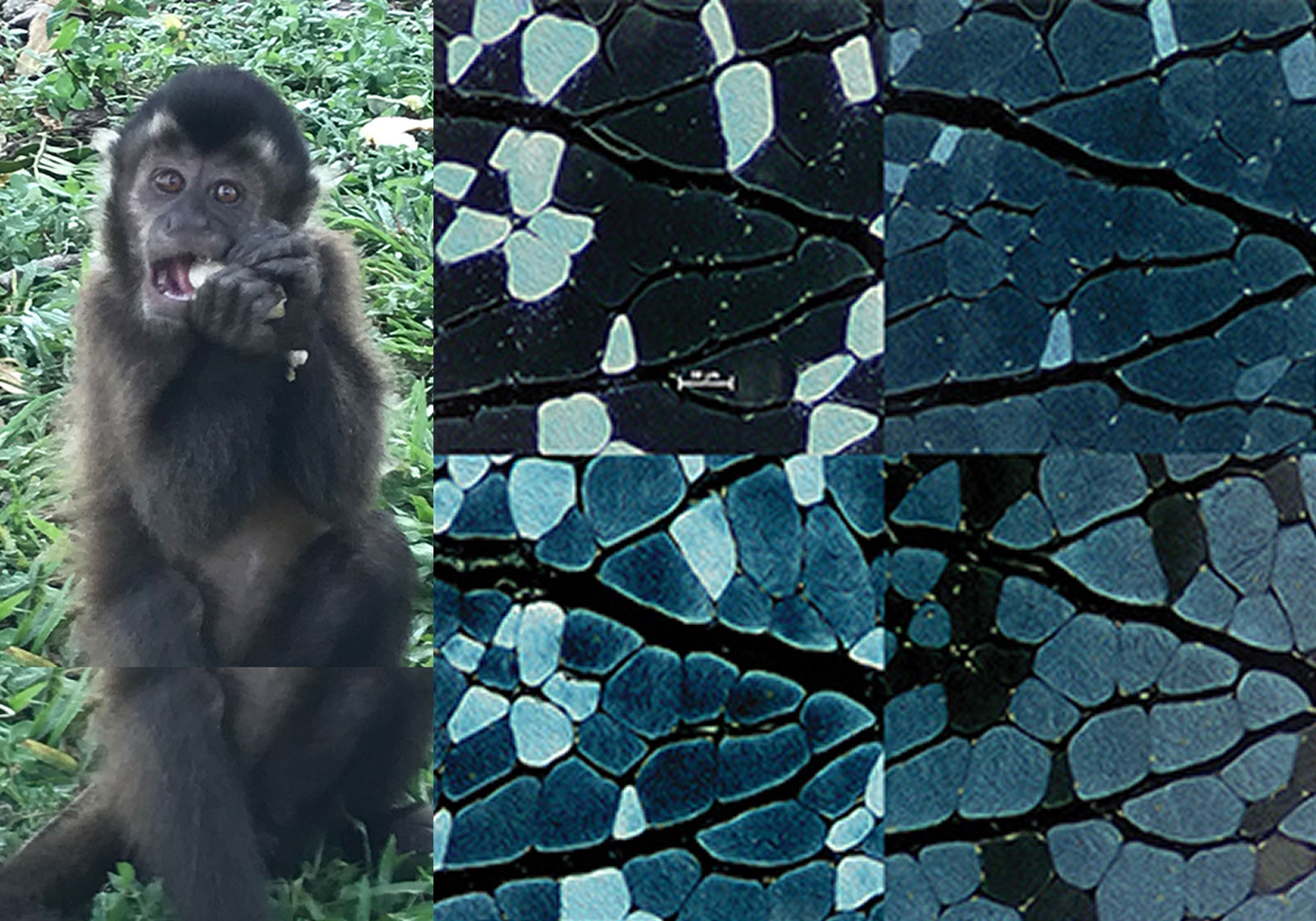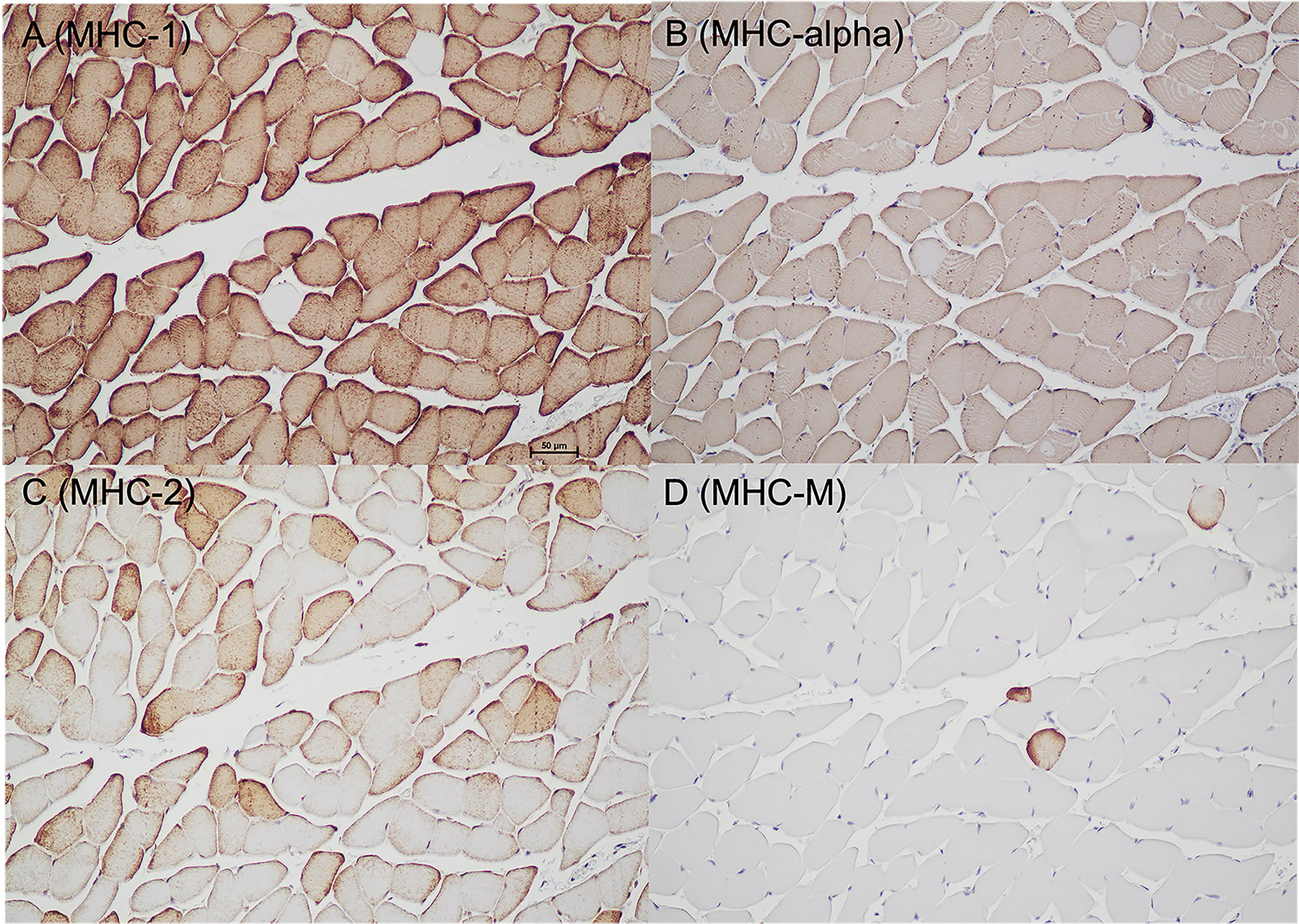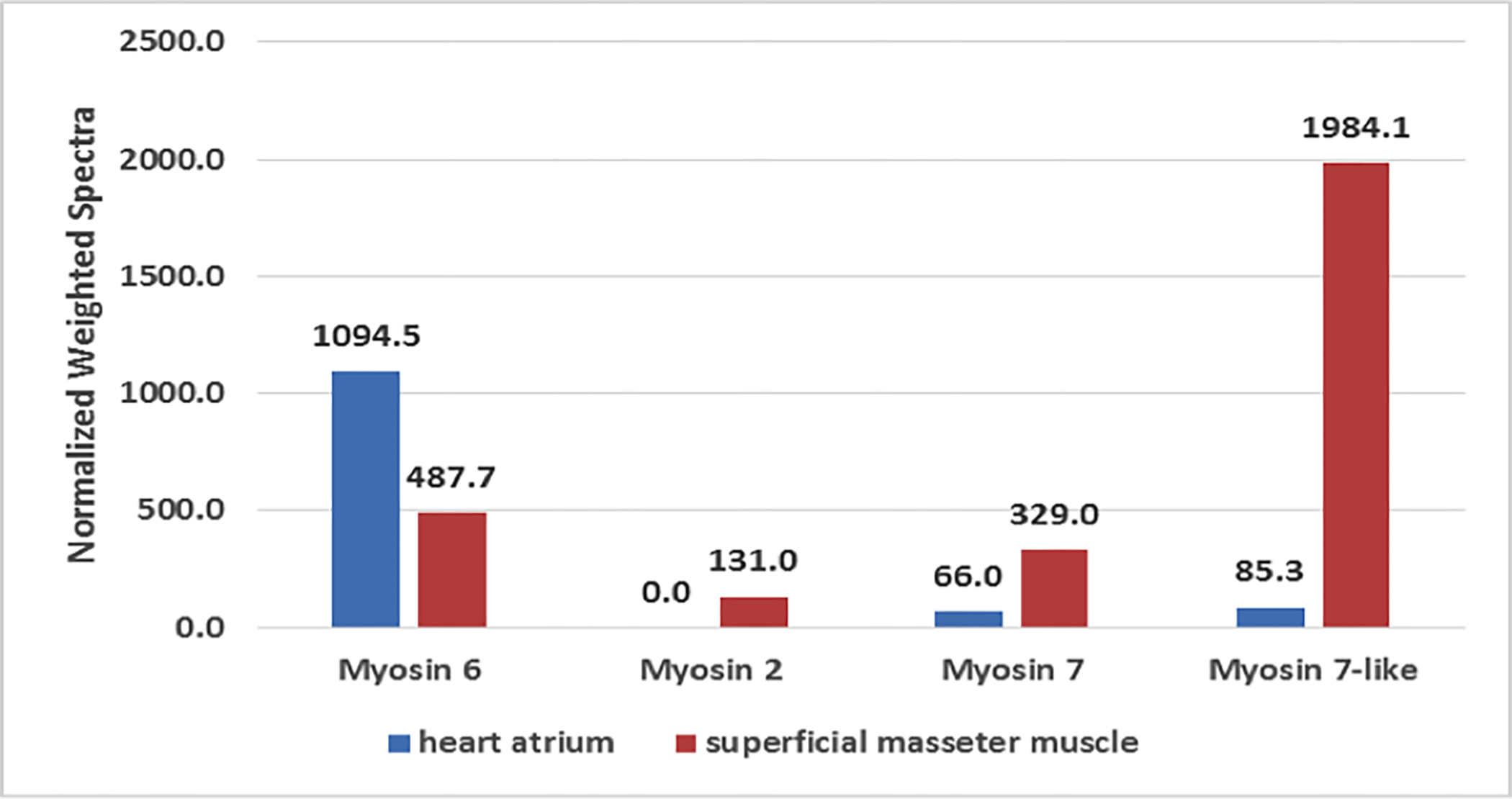
Fiber-type Phenotypes in the Chewing Muscles of Primates
We study fiber types of the jaw adductor muscles in relation to feeding and social behaviors such as aggressive biting in primates.

Fiber types in mammalian chewing muscles have been linked to feeding performance, but little is known about this relationship in primates. This lack of data on primate fiber types and their physiological correlates (the fiber-type phenotype) limits our knowledge of fiber-type variation and hampers our ability to test hypotheses of feeding-system function and performance in living and fossil primates.
This project seeks to provide a more complete framework for linking primate masticatory anatomy and physiology with function and performance. Our lab, in collaboration with Dr. Megan Holmes (Duke University), has been quantifying the myosin heavy chain (MHC) isoforms expressed in mammalian chewing muscles in a large and diverse sample of anthropoid and strepsirrhine primates.

Using proteomics and immunohistochemistry, we have identified for the first time the expression of α-cardiac MHC in the jaw-closing muscles of primates. Our findings further demonstrate a greater abundance of hybrid fibers compared with nonprimate mammals, and the expression of these hybrid fiber in specific patterns. We are currently testing specific hypotheses about fiber-type expression, including the 'frequent recruitment hypothesis', the 'high occlusal force hypothesis', and the 'aggressive biting hypothesis'. View Dr. Taylor's ResearchGate page for publications resulting from this work. We are also collaborating with Dr. Mark Miller at UMass Amherst to determine the contractile properties of the different MHC isoforms of the fibers found in primate jaw-closing muscles. This work is funded by the National Science Foundation (BCS 1719743) and Emory National Primate Research Center Grant Nos. ORIP/OD P51OD011132 and U42PDP11023.
